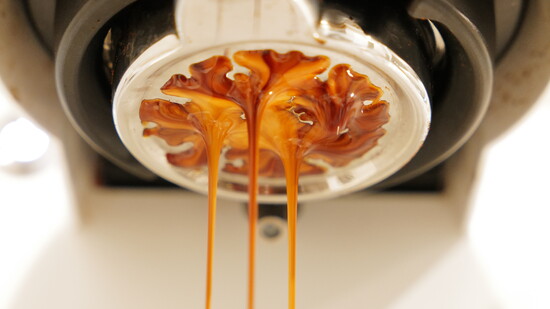Missoulians are lucky enough to be steeped in choices for locally roasted coffee. We sat down with five local roasters to percolate through how they roast and source beans, interact with customers, and create community through coffee.
James Chapman
Co-founder and co-owner, Black Coffee
How do you help a customer decide which roast to buy?
The blends tend to be a little more approachable for someone who isn’t sure what they like, since a blend carries multiple flavors and multiple roast levels. One coffee is an instrument. If you blend that coffee what you’re getting then is bass, the drums, richer guitar sounds, piano background.
How many days after roasting is the perfect time to enjoy your coffee?
I used to say that a couple months old was old but now I don’t really think that anymore. It’s a disservice to all the work that’s gone into that coffee. The changes in flavor are so subtle I don’t think most people would notice them. And even though they’re different, that doesn’t make them worse. Roasted coffee is kind of like honey. It can sit for years and it’ll be fine.
Sebastian Skokan
Owner and certified Master Roaster, Floreo
What flavors are you trying to attain or pull out when you roast?
People refer to coffee as a bean, but it’s actually the seed of a fruit. If you have Flathead cherry and there’s the pit inside of it, that’s exactly what coffee is. And so, when I’m roasting coffee, I’m trying to bring out the fruitiness of coffee. The coffees I specialize in are fermented coffees, so really processing it like you would a wine. Sealed fermentation tank, adding certain types of yeast, fermenting it for a week, two weeks, highlights the fruitiness as well. Coffee is actually twice as chemically complex as wine.
How and from where do you source your beans?
I compete in national and global coffee brewing championships. The farmers I work with are producing coffees for those competitions. No one else really has access. That’s mainly what we’re roasting, and it’s just coffee that’s unparalleled in quality.
Sadie Ajax
Head roaster and wholesale manager, Clyde Coffee
Describe a coffee ritual you have.
I think part of the job is drinking a lot of coffee and making sure you’re doing everything correctly while roasting. Making sure the products and specifics you’re trying to get out of the coffee come out. Every single morning, I’m a creature of habit, I make a coffee, either a pourover or a French press, and I take it out with me to walk my dog.
Have you noticed any recent trends in coffee that you’re excited about or wary of?
I started to roast in January and it was about mid-January, mid-February, the highest green coffee costs recorded. I kinda fell into the role during that and had to navigate that situation. We wanted to maintain high quality but at the same time we wanted to make money as a company. Finding alternative ways, blending differently, so we still maintain that quality that all of our customers are used to.
Ben Gaude
Director of coffee, Drum Coffee
What sets you apart from other local coffee roasters?
Coffee is about community. Drum is the most loving group of people in Missoula. We have very little staff turnover because it’s really about loving our people, loving the art, loving the community. We create an atmosphere of support and community that lets people thrive. Our baristas are thriving, and you feel that, so the community that we gather is thriving. And the coffee is delicious to boot. We have something for everybody and we execute all sides of the spectrum extremely well.
What’s one roast you’re especially proud of?
I’m really proud of our Costa Rica Santa Elena. One of the few producers that not only provides work for the migrant workers but gives them a safe haven. Food, a little bit of shelter, they can see a doctor, childcare. So again it comes back to community, and what do you love, and why do you do it.
